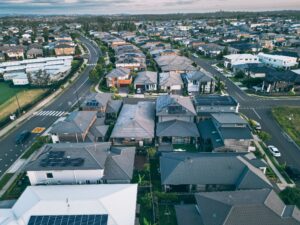CSL (ASX:CSL): Its promised double-digit earnings growth for the rest of the 2020s, but will Trump’s tariffs shatter the dream?

CSL has been hit more than most other stocks due to Trump tariffs. While many companies being sold off merely ‘could’ be impacted, this company almost certainly will be impacted. And if it is, the company’s promise of ‘double-digit earnings growth’ for the rest of the decade might not be kept.
CSL is the ASX’s largest healthcare stock and the third biggest company behind BHP (ASX:BHP) and CBA (ASX:CBA). Capped at over $115bn, you could argue it is a perfect case study of how companies can create long-term value as well as juggle innovation and maintaining core parts of a business that are delivering. Not to mention what can happen to investors who buy a company when it is low and hold for the very long-term.
Even though it is down 25% from highs seen in August last year, investors who have held for years would have realised spectacular returns. Its 1994 IPO was done at A$2.30 per share, and a 3 for 1 stock split in 2007 means those original shares are about $0.77 each.
How did this company do so well? And will it rebound from the downturn seen in the past year or two?
Introduction to CSL (ASX:CSL)
CSL stands for Commonwealth Serum Laboratories. It was once a government entity, established in 1916, to meet the health needs of the nation during World War One. The company has a proud history, enabling many of the 20th century medical advances to reach our shores such as insulin, penicillin and flu vaccines.
CSL, has two primary businesses: flu vaccines and blood products – it takes plasma from donors and turns it into life-saving therapeutics, particularly immunoglobin products. Plasma is the substance that carries red and white blood cells through the body – these therapies are relevant for disorders such as hemophilia, primary immune deficiencies, hereditary angioedema and inherited respiratory disease.
Despite its size, CSL continues to spend hundreds of millions of dollars on R&D annually and is not hesitant to undertake M&A activity. Recently it made the biggest buyout in its history: Switzerland’s Vifor Pharma for which it paid US$11.7bn late in 2021. CSL is evidently looking to profit from kidney disease, which affects 850m people globally – a figure expected to grow given the global obesity epidemic. Additionally, the firm has steady leadership with the company now onto only its third CEO since listing.
Current worries
Investors in CSL have 3 worries on their mind: Vifor, Ozempic and Trump’s tariffs. Arguably, only the third is on investors’ minds at this exact point in time, but let’s still deal with each of these.
Trump’s tariffs
This investor fret is unique because while there are arguments that investor fears may be overblown on the other two, we think the only way tariffs won’t be a threat at all is if they are scrapped altogether. Pharmaceuticals actually were exempt in the initial Liberation Day plans and CSL told investors as such the day after those tariffs. ‘We look forward to working with [the] US administration to ensure American patients retain access to our lifesaving medicines,’ it said.
But in speeches since, President Trump singled out this sector as one he would target. The US is CSL’s largest market (with 49% of revenue) and a significant proportion of its goods are exported from Switzerland, which is subject to a 31% tariff. Additionally, some of CSL’s medicines are made in Australia and there could be more than tariffs facing these medicines. Trump has criticised subsidised medicines schemes (our Pharmaceutical Benefits Scheme is one example) that limits the price that can be charged for drugs. The Albanese government has indicated it will not change the scheme and this could lead to a stand-off between it and the Trump administration.
One way CSL could get around this is by increasing its manufacturing presence in the US – it has a facility in Kankakee, Illinois (56 miles south of downtown Chicago) but this will cost money. Alternatively, it could switch production Initial stages of manufacturing are done there but the fill and finishing is in Switzerland and Australia. Analysis by Goldman Sachs has found that a 10-25% tariff on sales could lead to an EBIT impact of 6-20%.
We cannot conclude on how the tariffs will impact CSL because we do not yet know how it will respond.
Vifor
Vifor is a Swiss renal therapy and iron deficiency products company that CSL paid US$11.7bn for in late November 2021. Investors doubted whether or not it paid the right price, especially as the company was opaque about the acquisition for some months – only giving a detailed overview in October 2022.
CSL wanted to expand its R&D pipeline and gain exposure to the growing market that Vifor’s products serviced. The key product was Ferinject which contributed more than a third of revenue, but came off patent in Europe in 2023 and in the US in 2028. Investors felt somewhat vindicated by their scepticism when CEO Paul McKenzie warned investors in its 1HY24 results that the portfolio faced headwinds. Some late-stage assets had poor showings in the clinic, and step-edit measures in the US requiring patients to try cheaper drugs before ‘stepping up’ to more expensive alternative were taking a toll. Vifor contributed US$1bn in sales, although this was barely one-eighth of the company’s total revenues. CSL’s Behring business (the blood plasma division) recorded $5.2bn in revenue.
Ozempic
Investors believe that if you can aid weight loss and rescue obesity – and the data overwhelmingly depicts that the drug can – you can reduce the risk for many health conditions caused by obesity such as heart disease. In doing so, you eliminate the market for many medtech and biotech companies.
In our view we think the potential impact has been overblown for 5 reasons. First, because Ozempic does not aid those already suffering from conditions. Second, there have been severe supply chain issues for Ozempic since it has taken off in popularity. Third, the broader weight-loss drug market may become too fragmented for Ozempic to have an impact. Fourth, it remains to be seen what regulators could do to the drug’s market. Keep in mind that Ozempic is still not approved for obesity. Also, there have been some minor interventions by other regulators, such as reducing subsidiaries and instructing doctors to prioritise alternatives non-diabetics. And fifth, it could pose an opportunity for healthcare stocks with manufacturing facilities to manufacture the drug themselves.
Double digit growth for the rest of the decade
In FY24, delivered US$14.8bn in revenue and a $2.9bn post-tax profit, both up 11% from FY23. It paid a total dividend of US$2.64 per share, or A$4. The biggest contributor was the Behring segment which delivered US$10.6bn in sales, $5.7bn of which came from its Immunogobulin products including Privigen and Hizentra.
The company anticipated its profit to be $3.2-3.3bn for FY25 and for revenues to be 5-7% higher. CEO Paul McKenzie proclaimed the company was in a strong position to deliver annualised double-digit earnings growth. This was reaffirmed at its 1H25 results in February where revenues were $8.5bn and its profit was just over $2bn, up 5% and 6% respectively.
Nonetheless, investors were nuanced to the results because:
- The jury is still out on Vifor,
- Revenue from vaccines are down due to low vaccination rates and having a vaccine skeptic in charge of America’s health doesn’t bode well for their rise.
- Market conditions for the blood plasma business were are difficult in the short-term. The company has to pay for blood plasma donations and has had to pay higher donor fees. Donor fees may have peaked, but are unlikely to return to pre-COVID levels. The company has told investors it is seeking to use digital technology and more flexible labour to more effectively manage donors.
One positive was that the uptake of Hemgenix, a gene therapy for haemophilia B, had reportedly accelerated since its launch. Whilst specific figures for Hemgenix were not provided, product sales from the haemophilia division were $731m, up 11%. Not bad considering it is the world’s most expensive drug, at US$3.5m per dose.
So should I buy CSL?
Analysts covering CSL in Australia (which total 17) have a mean price of A$320.41, a figure over $80 higher than the current share price. They call for $15.7bn in revenue and $6.14 EPS for FY25 which would be in line with the company’s expectations. For FY26, $16.7bn in revenue (up 6%) and $7.06 EPS or a $3.4bn profit (up 15%). The company is trading at 5.1x EV/Sales, 14.7x EV/EBITDA, 20.5x P/E and 1.6x PEG – all more reasonable multiples than a few weeks ago, but not cheap either.
We think investors who hold for 10-20 years won’t be disappointed in buying CSL now. However, it won’t generate ‘quick’ returns, so those investors shouldn’t buy CSL.
In the end whether you own CSL or not, you’ll hear a lot about it because it is such a prominent company, and one at the forefront of the standoff between the Albanese and Trump administrations.
What are the Best ASX Stocks to invest in right now?
Check our buy/sell tips

Blog Categories
Get Our Top 5 ASX Stocks for FY26
Recent Posts
Is Lendlease (ASX:LLC) out of the doldrums for good?
Lendlease (ASX:LLC) has for the past several years been the classic definition of a ‘value trap’. You think a good…
Here are the 2 most important stock market taxes that investors need to be aware on
As one of two certainties in life, investors need to be aware of stock market taxes. Investors may be liable…
Our 5 ASX Predictions for 2026!
This article outlines 5 ASX Predictions for 2026 that Stocks Down Under puts its neck on the line to assert…


